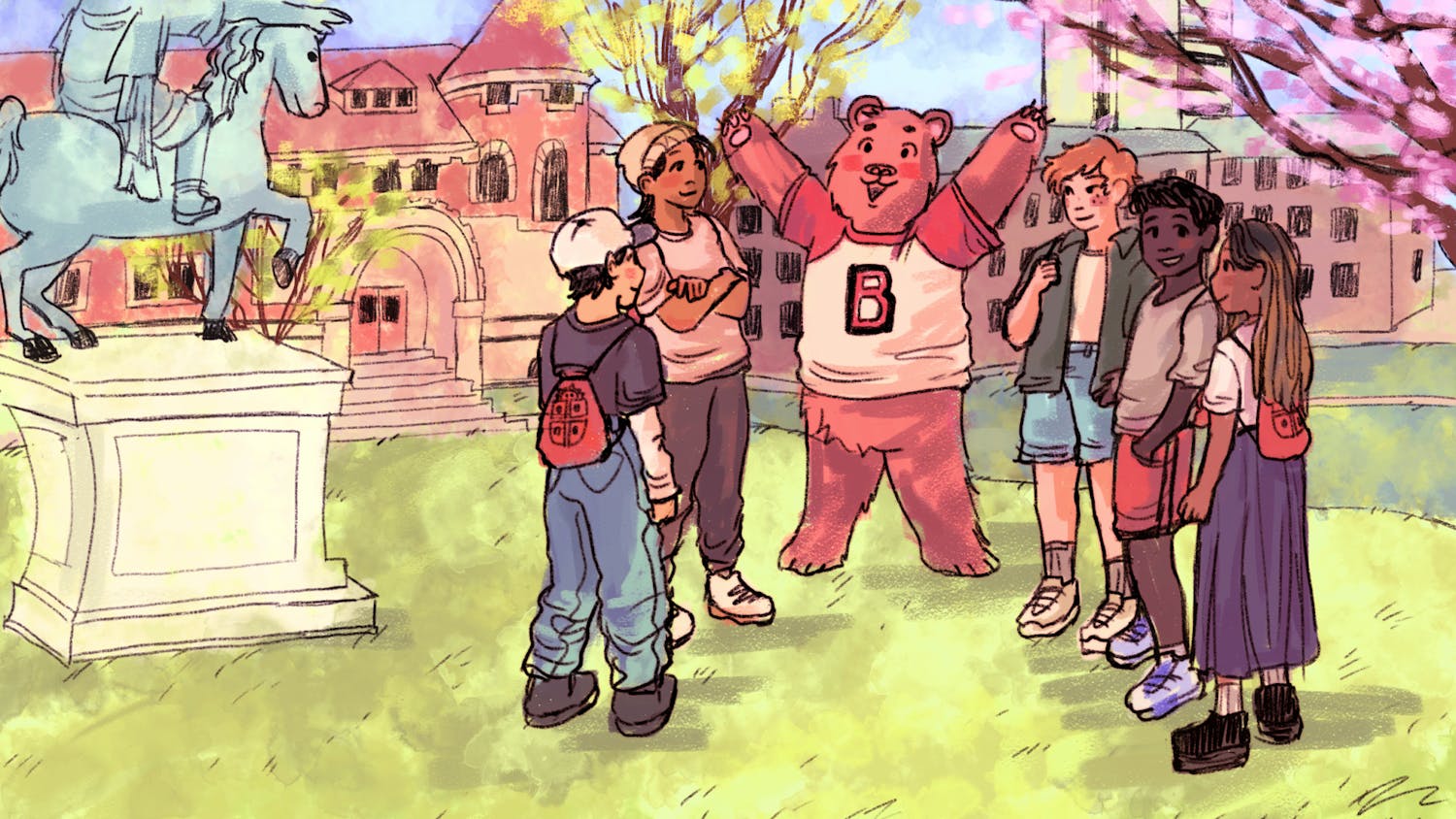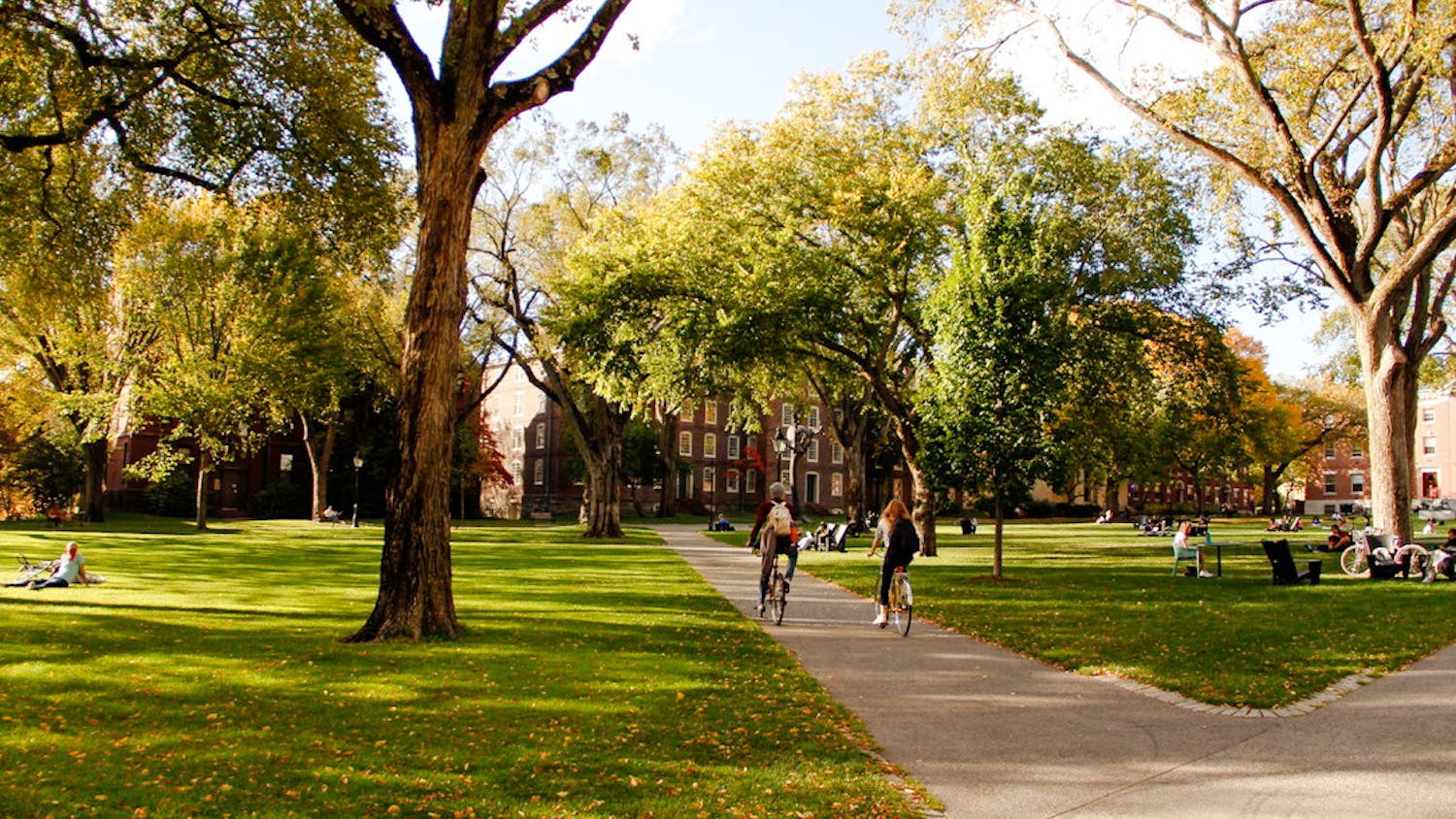On any given day, community members wandering around campus are likely to stumble across a familiar scene: a group of students huddled together under a campus arch singing a cappella to an audience of friends and fans.
A cappella is a major part of campus life at Brown — in fact, the University boasts the most a cappella groups per capita in the U.S. And almost every student at the University has come in contact with the community — under archways, in audition halls and even tours around the country.
Brown is home to 14 a cappella groups, ten of which comprise the Intergalactic Community of A Cappella, an overseeing body. But according to Elsa Block ’24, who leads the IGCAC, “the history and the tradition (of a cappella) really comes down to the individual groups.”
Musical groups have a long history on Brown’s campus, but the Jabberwocks was one of the first a cappella groups formed at the University that remains active today. Originally formed as a male double quartet in 1950, the Jabberwocks were known for their classic dress — often sporting white button-downs, striped ties and gray suits. Since the 50s — barring a brief period of inactivity in the 1970s — the group has released numerous albums, gone on numerous tours and competed across the country.
In fall of 1951, the Chattertocks were founded for an “interdormitory group singing competition.” Led by Nancy Tobin ’55, the group was initially a parody of the then-all-male Jabberwocks. The Chattertocks were an immediate success and, today, are the longest-running, continuous a cappella group at Brown.
According to current Chattertocks President Katherine Dudley ’24, they are also the “third oldest historically all-women group in the nation.”
Like many of the a cappella groups on campus, the Chattertocks have several traditional performances every year — including a “Smoked Salomon” performance with the Brown Derbies and their “Get Lucky” concert, performed alongside every historically female a cappella group on campus.
The Chattertocks also typically tour during winter break, most recently traveling to Washington D.C., New Jersey, New York and several parts of New England. “That’s a really big bonding opportunity for us,” Dudley said. “We’re like our own little chosen family at Brown.”
The first all-gender a cappella group arrived at Brown fall of 1983. The Higher Keys, founded by Norman Ryan ’85 and Audrey Silver ’86, was born out of a love for jazz and contemporary pop music, according to Ryan.
According to Ryan, most groups on campus at the time only sang R&B and pop arrangements. “We wanted to delve further back into the canon of … the Great American Songbook,” he said, citing George Gershwin’s “I Got Rhythm” as the Keys’ first arranged tune.
Upon returning to campus for the group’s 25th anniversary, Ryan was “pleasantly surprised at how easy it was to fit right in again. … That spirit of (community) was definitely still there.”
“In the end, … we all just really enjoy singing together,” said Block, who is a member of the Ursa Minors. Many of Brown’s a cappella groups will perform under the Wayland Arch on the evening of ADOCH.
“A cappella at Brown is just full of traditions,” Block added, citing the Midnight Meeting — when all IGCAC groups convene to select auditionees — as a prime example. After the meeting, the groups disperse to surprise their newest members in their dorms, often well past midnight.
Most groups hold auditions during both the fall and spring semesters, and Dudley encouraged students of all levels of experience to try out.
“There’s a home for anyone in a cappella who wants to be in it.”

Rya is an Arts & Culture editor from Albany, NY. She is a senior studying English and Literary Arts, and her favorite TV show is Breaking Bad.





